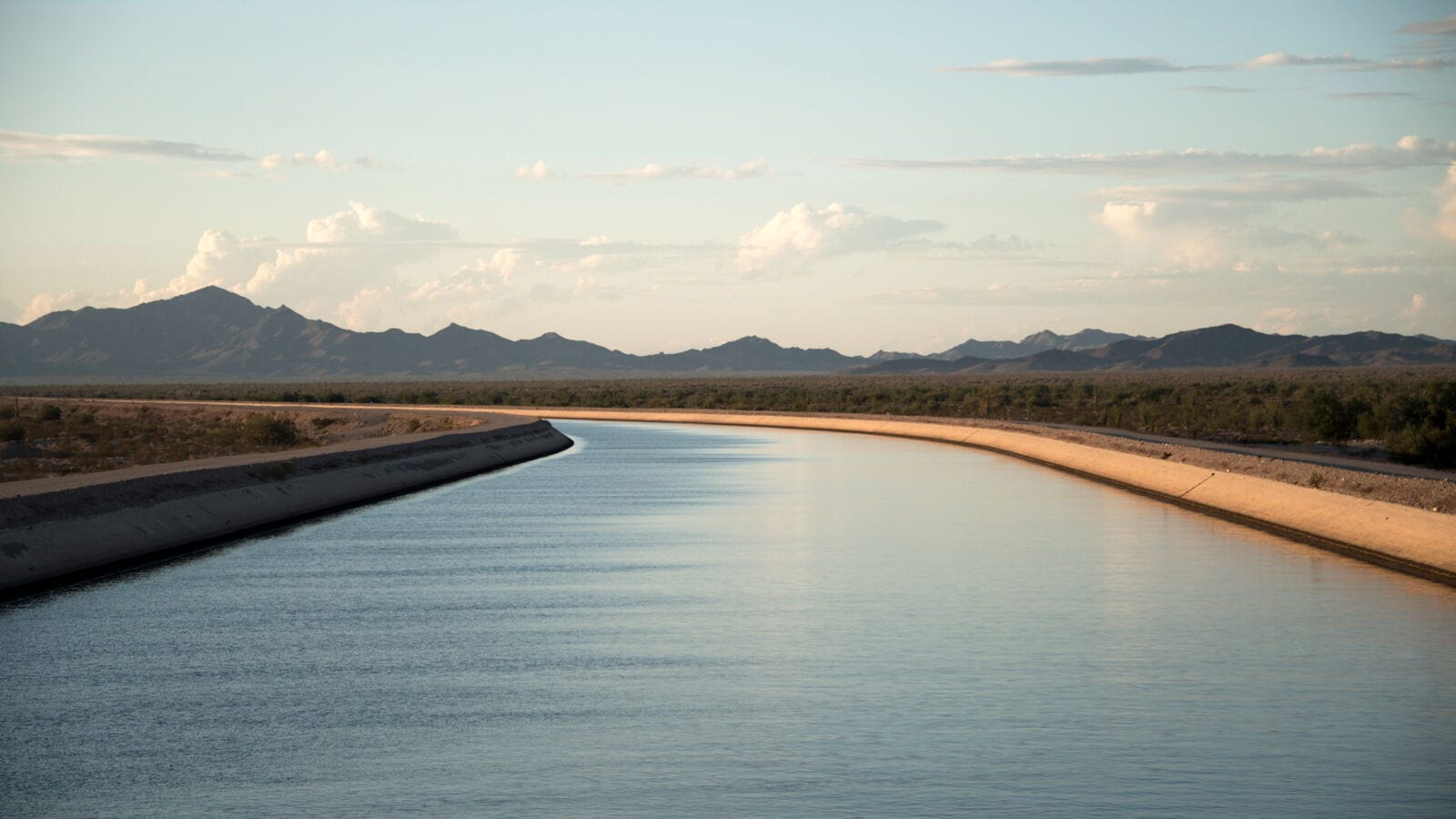From its headwaters in the Rocky Mountains until it runs dry in Mexico, the Colorado River has nourished those living in the region for thousands of years. That remains true to this day, with more than 80% of Arizona’s population receiving water from the river’s flow. But as supplies dwindle and a high stakes negotiation looms, the future of the Colorado River is murky.
Arizona, California, Colorado, Nevada, New Mexico, Utah, Wyoming and Mexico all receive an allotment from the Colorado River based on intricate legal arrangements. Today, the Grand Canyon State is granted 2.8 million acre-feet of water, 60% of which is managed by the Central Arizona Project (CAP). For context, Tempe Town Lake holds approximately 3,000 acre-feet of water.
Due to shortages, CAP’s 336-mile canal system is taking 512,000 acre-feet less water from its share, but the current framework governing how and when those reductions occur is set to expire at the end of next year.
“Thinking about what comes after 2026 is like traveling to a new planet. There’s no certainty of what may happen,” explains Vineetha Kartha, Colorado River programs manager for CAP. “Right now, there are rules. If we’re in a tier one shortage, I know how much my operations need to be reduced. In 2027, I have no idea what I’d do because nothing is in place yet.”
The U.S. Department of Interior has not yet shared what actions it would take if a new agreement isn’t in place before the deadline, adding to the confusion. But there is no doubt that Colorado River supplies are scarce — measurements of Lake Mead and Lake Powell record them both at approximately 30% capacity.
Kartha notes that describing the current conditions as a drought is inaccurate since it implies a temporary problem. Instead, she explains that the region is experiencing aridification in response to warming temperatures, meaning a hotter and drier climate is expected to persist.
“If reservoirs were 92% [full] like they were back in 2000, I wouldn’t be that worried,” Kartha says. “But we are experiencing aridification, so reductions cannot be borne by one state or entity. They have to be shared.”
Downstream effects
Even though concerns over the Colorado River grab headlines today, debates over its natural bounty are not new. A century ago, the Colorado River Compact of 1922 divided the region into the Upper Basin — consisting of Colorado, New Mexico, Utah and Wyoming — and the Lower Basin, comprised of Arizona, California and Nevada.
Six years later, the Boulder Canyon Project Act of 1928 authorized the construction of Hoover Dam and the creation of Lake Mead. This legislation also apportioned 7.5 million acre-feet of water to the Lower Basin states, with California receiving the largest share.
“Arizona got 2.8 million acre-feet, but could only use about 1 million of that,” explains Rob Anderson, director of natural resources for Fennemore. “The dream was to move the bulk of that water to Central Arizona. There were concerns that since California was using more than the 4.4 million acre-feet it was given, Arizona would simply lose its allocation.”
The Colorado River Basin Storage Act of 1968 helped realize this dream, establishing CAP and authorizing the construction of the canal system. But getting political backing for the project came at a price.
“To get the California delegation on board, we had to agree to make CAP the junior water user on the river,” Anderson says. “That means that shortages on the Colorado River fall disproportionately on CAP.”
When water supplies were originally split up between the states, Anderson notes that the measurements were not as precise as they are today. The assumption was made that 16.4 million acre-feet would be reliably available.
“The historic flows of the Colorado River haven’t met that since 1928, and they’ve been declining,” he continues.
As it became clear that shortfalls were imminent, Kartha says new regulations were put into place regarding the operations of Lake Mead and Lake Powell.
“The first four years [of the 2000s] were the driest years we had ever seen, one after the other,” she continues. “We realized there needed to be actions taken to ensure the health of these two reservoirs.”
READ MORE: Arizona Department of Water Resources sued over groundwater rule
The 2007 Interim Guidelines set rules regarding when water users would take cuts. If, for example, Lake Mead falls below 1,075 feet, Kartha says Arizona, Nevada and the Republic of Mexico all take reductions.
“That made some impact, but 2012 was another really dry year,” she continues. “We realized even more needed to be done than was laid out in the 2007 Interim Guidelines, so we made an agreement with the two other Lower Basin states called the System Conservation Pilot Program to keep the reservoirs from reaching critical elevation.”
But around 2015, aridification of the region was becoming more evident, leading to the creation of the Drought Contingency Plan. Kartha says working with the federal government and all seven states was critical to its formation.
“With the Drought Contingency Plan, collaboration within Arizona became even more important,” she continues. “We had partnerships from the tribes on river, who hold some of the highest water rights in the system, as well as the Gila River Indian Community in Central Arizona. They agreed to reduce their demand by 50,000 acre-feet every year for three years to prop up Lake Mead, which helps a lot.”
Even though actions have been taken to blunt the effects of aridification, Kartha says that all who benefit from the Colorado River must be prepared for a future with dwindling supplies. That said, there is reason for hope — she points to Arizona’s long history of successful water policy, such as storing this invaluable resource for a not-so rainy day and building water recycling facilities.
“We’re also working with California to treat water that is currently being released into the ocean and instead deliver it to communities in Southern California, which could free up about 170,000 acre-feet of supplies,” Kartha concludes. “While there is uncertainty about 2027, lots of work has been done over the past two decades to ensure everyone will continue to get water.”




